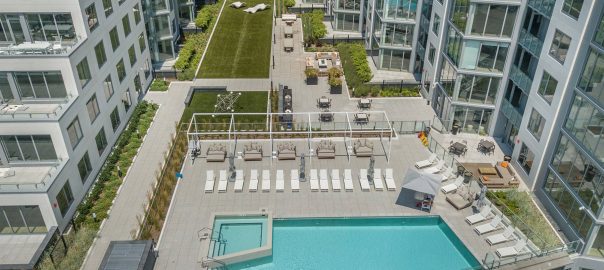In recent years, the U.S. housing market has witnessed a significant shift with the emergence of Build-to-Lease (BTL) properties. These purpose-built rental communities are reshaping the landscape of American housing, catering to a growing demand for flexibility, luxury, and community-focused living. This article delves into the importance of BTL properties, the cultural shift towards renting over ownership, and the evolving expectations of renters, particularly among younger generations.
Understanding Build-to-Lease Properties
Build-to-Lease refers to residential developments specifically constructed to be rented out, rather than sold. Unlike traditional single-family homes or apartments that are built for sale, BTL communities are designed with renters in mind, offering amenities and services tailored to their needs.
According to the National Rental Home Council (NRHC), nearly 25,000 BTL homes were completed in 2023, marking a significant increase in the sector’s growth. Major metropolitan areas such as Phoenix, Dallas/Fort Worth, Atlanta, Charleston, and Austin have seen substantial numbers of BTL completions, indicating a strong demand for this housing model.
The Cultural Shift: Renting vs. Owning
Historically, homeownership has been considered a cornerstone of the American Dream. However, recent trends indicate a shift in this paradigm, particularly among younger generations.
Millennials, for instance, have traditionally been the largest group of renters. However, recent data from RentCafe reveals that as of 2022, millennials became the largest generation in the U.S. to transition from renter-majority to owner-majority, with 52% of millennials owning a home. Despite this increase in homeownership, millennials still account for a significant portion of the rental market, with 17.2 million renter households in 2022.
In contrast, Generation Z, those born between 1997 and 2012, is currently the largest group of renters, with 5.6 million renter households in 2022. This demographic’s preference for renting over owning is influenced by factors such as economic uncertainty, student debt, and a desire for mobility and flexibility.
The Demand for Luxury, Wellness, and Amenities
As renting becomes more prevalent, renters’ expectations have evolved. No longer are they satisfied with basic accommodations; today’s renters seek luxury, wellness, and a host of amenities that enhance their living experience.
BTL communities are responding to this demand by offering a range of high-end amenities, including fitness centers, swimming pools, co-working spaces, and pet-friendly facilities. These features cater to the lifestyle preferences of modern renters, providing convenience and enhancing quality of life.
Moreover, wellness has become a significant focus in BTL developments. Communities are incorporating elements such as green spaces, walking trails, and wellness programs to promote physical and mental well-being among residents.
The emphasis on luxury and amenities is not just about attracting renters; it’s about retaining them. With the cost of renting rising in many urban areas, developers are investing in features that justify the expense and create a sense of community and belonging.
Infusing Local Culture into Urban BTL Developments
One of the emerging trends in BTL developments is the integration of local culture into the design and amenities of urban units. Developers are recognizing the value of creating spaces that reflect the unique character and heritage of their locations.
Incorporating local art, architecture, and community traditions into BTL developments not only enhances the aesthetic appeal but also fosters a sense of connection among residents. This approach contributes to the overall wellness and satisfaction of tenants, making them feel more rooted in their environment.
For investors and developers, this cultural integration can lead to higher occupancy rates and the ability to command premium rents. Tenants are increasingly seeking living spaces that resonate with their values and lifestyles, and BTL communities that reflect local culture are well-positioned to meet this demand.
Economic Implications and Investment Opportunities
The growth of the BTL sector presents significant economic opportunities. Developers and investors are recognizing the potential of purpose-built rental communities to meet the evolving demands of renters while providing stable returns.
For instance, companies like American Homes 4 Rent (AMH) have capitalized on this trend by constructing energy-efficient homes with high Home Energy Rating System (HERS) scores, appealing to environmentally conscious renters.
Additionally, the BTL model offers a solution to the housing supply shortage in many urban areas. By focusing on rental properties, developers can contribute to alleviating the housing crisis while meeting the needs of a diverse renter population.
In conclusion, Build-to-Lease properties represent a significant evolution in the U.S. housing market, reflecting broader cultural shifts towards renting and changing expectations among renters. As younger generations prioritize flexibility, luxury, and community, BTL developments are poised to play a crucial role in shaping the future of housing.
For developers and investors, the BTL sector offers a promising avenue for growth, aligning economic opportunities with the evolving preferences of today’s renters. As this trend continues to unfold, it will be essential to monitor the developments in BTL communities and their impact on the broader housing market.


